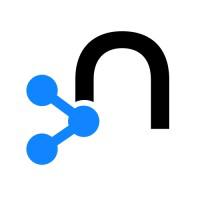Neo4j Review 2025: What It Is, How to Use It & Is It Worth It?
Map and analyze complex data relationships with a graph database.

Neo4j Description
Starting price
65
- Free plan
- Paid
- Free trial
Neo4j Detailed Review
Diving deeper into Neo4j, we find that its schema flexibility and analytical capabilities are a game-changer for organizations dealing with complex data relationships. Take Eric Wespi, a data scientist at Boston Scientific, for example. He praises Neo4j for its ability to reveal connections between manufacturing batches, which would be a tough nut to crack with other database tools. Neo4j's graph model allows for dynamic schema evolution, meaning you can add new types of relationships and entities without overhauling the entire database structure.
Neo4j's Cypher query language is another feather in its cap. It's designed to be human-readable and intuitive, making it easier for developers to write complex queries that feel more like descriptive sentences than code. This can significantly reduce the learning curve for new users. However, it's worth noting that while Cypher is powerful, it may not be as widely known as SQL, which could be a barrier for some.
For those who prefer a visual approach, Neo4j Bloom is a standout feature. It allows users to explore and analyze their graph data without writing any code, which is a big plus for business users who may not be as technically inclined. The visualization capabilities of Neo4j are not just pretty pictures; they're a potent tool for uncovering patterns and insights that might otherwise remain hidden in a sea of data.
When it comes to integration, Neo4j plays well with others. It offers a range of drivers and connectors for various programming languages and systems, which means it can slide into your existing IT infrastructure with relative ease. This is crucial for organizations that want to adopt graph databases without having to reinvent their data management wheel.
On the flip side, Neo4j's advanced features and capabilities come with a cost. While there is a free plan available for the AuraDB product, this is limited to 200k nodes and 400k relationships. The Professional edition of AuraDB starts from a price of $65 per month and there is also an enterprise edition available for demanding businesses. Pricing for the enterprise edition is not readily available on their website, which means you'll need to contact their sales team for a quote.
Performance-wise, Neo4j is built for speed and reliability. It's engineered to handle large volumes of data and complex queries with ease. The database's native graph storage and processing capabilities mean that it's optimized for the tasks at hand, which can lead to significant performance gains over non-native graph databases.
Security is another area where Neo4j shines. It offers robust security features to protect sensitive data, including fine-grained access control and encryption at rest and in transit. This is an essential consideration for any organization that handles personal or confidential information.
In terms of support, Neo4j provides a wealth of resources for its users. From a comprehensive documentation library to a vibrant community forum and professional services, help is readily available. However, some users may find that the complexity of Neo4j's more advanced features warrants a steeper learning curve and a greater need for support.
To sum up, Neo4j is a powerful tool for organizations that need to make sense of complex, connected data. Its graph model, intuitive query language, and visualization tools are standout features that can provide significant business value. However, the cost and potential learning curve are factors to consider. For those willing to invest in understanding and utilizing its full capabilities, Neo4j can be a transformative addition to their data management and analytics toolkit.
Similar AI Tools

Dust
Developer Tools
Streamline the creation and deployment of large language model apps.

Replicate
Developer Tools
Run and fine-tune machine learning models in the cloud.

Imagga
Developer Tools
Enhance applications with advanced image recognition and analysis.

Monster API
Developer Tools
Access generative AI models without managing GPU infrastructure.